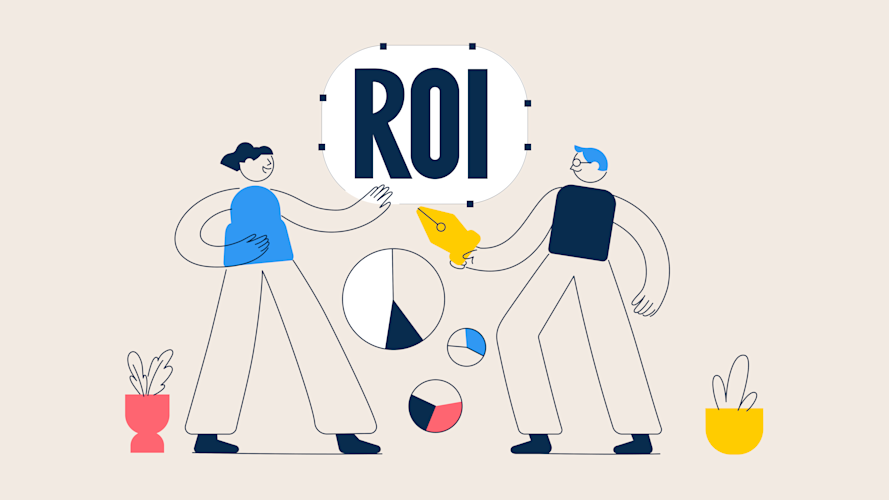
STRATEGY
DESIGN
UX
CONSULTING
BUSINESS
Designers, we need to talk about business and strategy
Design Thinking, Design Innovation, User Experience, Agile, Design Sprint and the list goes on and on… Design keeps evolving and so do the different tools that we can use as designers to show the world our value.
Big corporations are also hearing about design and would like to use this magic process to align teams, improve their work culture and make their businesses grow. They know that it’s something positive, that it’s more than a trend, and it can benefit their business. But, why is it so hard for them to invest in design?
The reality is that companies see all these design processes as something that’s alien to them, “everything is new to us”. They don’t understand how this relates to their day to day work, or how to identify the ROI (Return of Investment), “is there any kind of strategy behind all this?”.
When creating a commercial proposal where we try to convince our clients of the value of design and the ROI that this investment will have for their products, it’s important to understand the language of business and to have a strategic way of thinking.
Strategic Thinking
Design and strategy operate side by side from the beginning of any project. The strategist and the designer are concerned with having all the necessary information about the nature of the problem they are trying to solve, to be able to design a custom roadmap including costs, effort and time.
Usually, design is associated with a creative practice, and strategy is something pertaining to the business world. It’s time to change this paradigm.
Nowadays, the purpose of design is to solve people’s problems in a more inclusive way, helping to generate a more united and sustainable society. If we think of this definition in the context of businesses, where we understand that design doesn’t only impact people but also companies and the whole world, we will be able to manifest the value that design has as a strategic tool.
Designers know chaos, which makes us better innovators
Business projections are becoming harder and harder, in an ever-changing society, predicting what will happen in the future is taking a risk in a context of chaos.
Most leaders in big corporations can be reluctant to work in a context of chaos. They have many responsibilities and are less likely to take big risks and set big goals when things are working the way they’ve always worked. On the other hand, designers, who have been trained to be able to work within chaos, need to help company leaders to understand the modern world and align their strategic thinking to a new system of values.
Strategic thinking allows us to work in a more collaborative way with business executives, providing a fresh point of view to uncover hidden value in their products and services. They will also need to be open to incorporating design thinking into their teams to generate a more innovative strategic culture.
Put your design in the context of business
As designers, we make the mistake of thinking that everyone knows about design, so when we are trying to explain the ROI of our service we talk about typographies, colors, styles. We don’t put ourselves in our client’s shoes, who is worried about being able to understand how the investment will add value to their product.
When we are communicating, it’s important to understand and interpret the context. Most of the time, when we’re offering a design service, we do so in a business environment. Therefore, we need to understand the way that companies monitor and measure their health to be able to speak the same language. If we do some research on this topic, we’ll find the similarities that connect business goals to what we are offering in terms of design — it’s a way to align.
When we learn how to measure design, we learn how to speak the language of business more efficiently. This is an amazing tool when we’re helping our clients understand the value we create for companies.
We need to trust our design skills, and think that learning this language and becoming familiar with it is a new problem we’re trying to solve.
3 important key points to keep in mind:
Translate the value of design into hard numbers so that your engineering and executive colleagues can relate.
Pick the right metrics for your project and utilize quantitative and qualitative data to tell the whole story.
Use empathy to present your results in a way that resonates with your audience, remember, everything is a matter of context.
Becoming a strategic designer means taking everyone’s goals into account
Decades ago, Thomas Watson Jr., CEO of IBM said that “good design is good business”, and that has never been more true. Nowadays, the designer’s role has evolved to the point of having a place in the inner circle of some of the biggest companies and being able to shape their future.
Many UX designers make the mistake of only focusing on the user’s point of view, defending them at all costs, without thinking about how that can affect or impact the interest of the business.
The value loop is only possible when designers give equal importance to both sides of the equation, the business needs and the user’s goals.
It’s important to understand that this transformation of becoming a strategic designer is not for everyone. In design we have different layers, and some find their comfort zone working in a superficial layer, looking for color palettes that resonate with our users and polishing pixels in a new font we’re creating. The world needs these kinds of designers.
But the path of strategic thinking and the language of business is probably for you if:
You consider both sides of the value loop all the time
You like getting involved in different areas of companies
You’re constantly trying to show the value of design
But be patient, it takes time to put everything into practice, the only way to become a more strategic designer is to get started.


